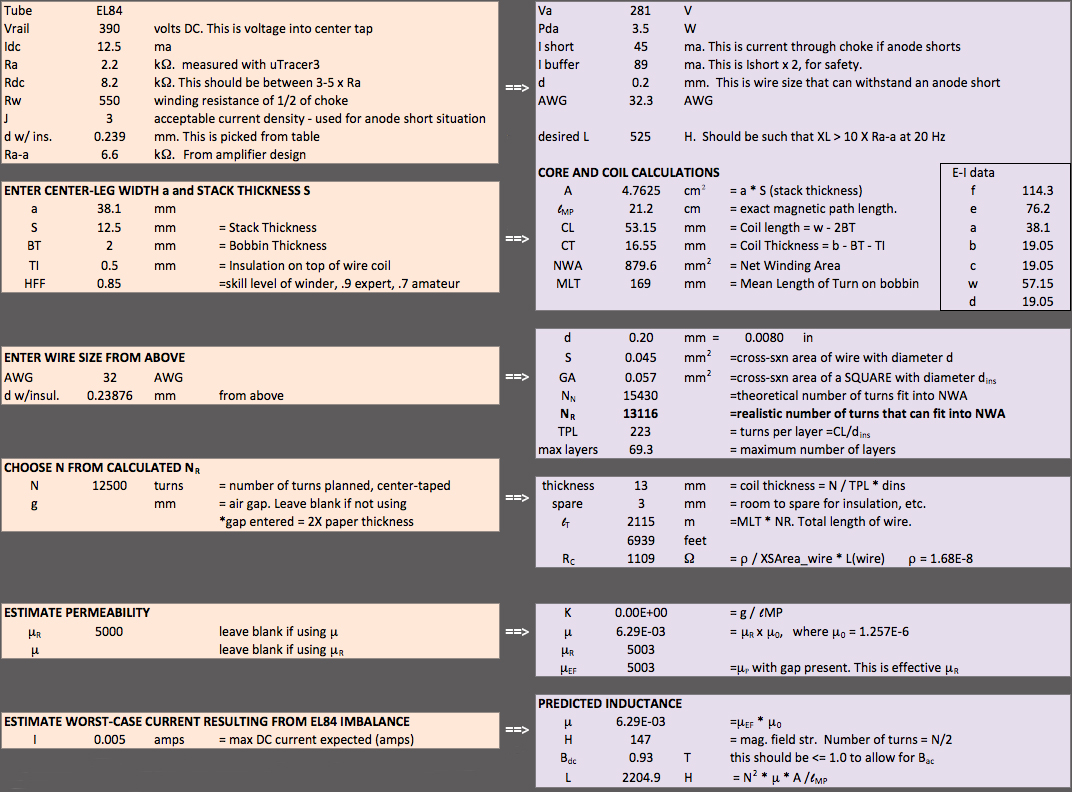13E1 ANODE CHOKE
I will be using cathode feedback for the output stage, which means that the grid voltage on the output tubes will need to be considerably higher. This means that the driver tubes (EL84) will need to swing lots of volts. By using choke loading rather than a simple resistor or even a CCS, the output voltages can swing higher than the anode voltage on the EL84. This is a unique property of chokes. So, I'll use an old-fashioned choke loaded design.
Below is the initial info going into my handy-dandy Excel spreadsheet. The tube is a power tube, the EL84. There will be about 390V going into the center tap of the choke. Each EL84 will pull 12.5ma. The wire resistance of the choke measures out to around 550R. This, plus the 8.2K resistor will drop 12.5 * (8.2 + .55) = 109V leaving about 281V on the EL84 anode. Ra is the intrinsic anode resistance of the EL84 and can be determined by datasheet or with my uTracer. The desired inductance is a number sort of empirically derived by Patrick Turner. It is unlikely that I can achieve this inductance, but I'll try.
To determine wire size, figure out how much current flows in the event of dead shorted tube. Ishort = 390/(8.2+.55) = 45ma. Double that for safety. Using acceptable current density of 3, wire size is determined to be .2mm or AWG 31.8. I'll use AWG32 wire.

I decided to use my shiny new (expensive) GOSS laminations with a tongue width a = 38.1mm and a stack height of 12mm. They are funny looking pancake chokes, but they provide a huge inductance.
Applying the same input as above, I calculated that with a=38.1 and S=12mm, I could get about 13000 turns of AWG32 wire on the bobbin. Calculated inductance > 2000H (will never happen) and flux density is a nice low .93. Time to wind.
I wound the choke and stopped at 12500 turns, center tapped. That is almost 7000 feet of wire - that's right, over 1.3 miles of wire. The inductance, using low voltage, was in the hundreds of Henries, and would be expected to be higher at higher voltage. I'll test that later.